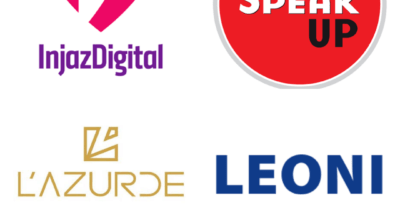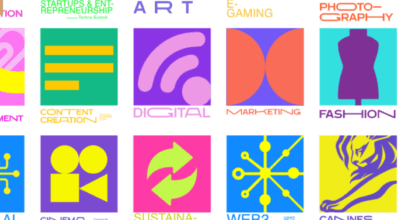It’s obviously not an easy task to accomplish. Tons of content are uploaded every minute in multimedia platforms that craft their algorithms to get the most out of you. This makes it tricky. But it’s without a doubt the hope most creators and upcoming entrepreneurs have. So, how can one intentionally go viral?
How Our Brains Determine What Goes Viral
As spooky as it sounds, we could understand virality more and therefore become more likely to achieve it, through monitoring our brain activity as we decide what to share. Studies at the University of Pennsylvania did just that. Researchers monitored the brain activity of 80 participants whilst reading New York Times articles (in the health section) and used those findings to accurately predict the likelihood of virality of articles in the New York Times amongst readers worldwide, and they were successful.
The findings concluded that viewers will share what will have them perceived in a positive light amongst their circles; something that connects to their own experiences, enhances their relationships and makes them look smart. They further discovered that the participants were thinking about both themselves and others when they were thinking about what to share or recommend, but also when they’re choosing what to read for themselves.
Everyone is different of course and the researchers acknowledge that. But what’s quite interesting is the implication these findings suggest: if they did well in predicting what articles will go viral amid readers around the world, then there are probably common motives within us all that decide what would go viral or not.
What Insiders Have to Offer
Kevin Alloca, currently the Head of Culture and Trends at YouTube claims that tastemakers’ mentions, community participation and unexpectedness are behind why videos go viral. And although Alloca works at YouTube, it’s good advice in general and is applicable to social media platforms.
A boost by a tastemaker doesn’t necessarily mean an endorsement. They could be criticizing your video or simply making fun of it (which could possibly attract unwanted attention). This is apparently not a new concept and was already present in old and traditional media. Obviously enough, getting a relevant tastemaker to give you a pump helps. Hesham Afifi’s popular strategic analysis (or El Tahlil El -Stratejy), for example, comedically criticizes a variety of videos and has opened the door for him to collaborate with major brands who ask him to work on their advertisements because they realize the importance of his role in this segment as a tastemaker.
Community participation is all about the two-way nature of entertainment on social media. We no longer have to watch passively and judge silently. Access to cheap phones with cameras and the internet allow almost anyone to easily respond to content posted online in no time. Think the Nyan Cat or the Kiki dance challenge; apart from the participation of tastemakers, the remixes, interpretations, commentaries and parodies created are the main reason behind their virality. The same goes for the Yanny and Laurel audio recording that, when traced back, comes from an opera singer who recorded it for vocabulary.com, to which it got shared by a couple of students on Instagram before a popular YouTuber picked it up! Community participation will help your content’s popularity through engagement. It’ll also tempt tastemakers who don’t want to be left out to jump on your bandwagon. So make sure you seek the appropriate online communities for your content and learn everything you can about them before you invite them to participate in, and respond to your content.
Unexpectedness is pretty self-explanatory: unpredictable, surprising and unique content has a better chance of rising through the internet’s ever-growing landfill. This is an attribute arguably shared by most internet sensations and digital cultural landmarks.
Finally, avoid fitting into a crowded category as much as possible and, if you have to, make sure you provide something impressively different than what’s already out there. Learning the technicalities and the way algorithms of search engines (Search Engine Optimization) and the different platforms work will certainly improve your chances as well.
Examples of Manufacturing Virality

Jimmy Kimmel live on his show — Via Jimmy Kimmel
Famous talk show host, Jimmy Kimmel, has been known for duping both his audience and news networks into believing fake viral videos, with the former enjoying it substantially more.
“As long as people want to be the first to post something, to get people to click through it will be easy. If people start evaluating material, it will make it more difficult. But I don’t see that happening. I don’t see us headed in that direction,” said Kimmel sarcastically in an interview with Recode, a tech news website.
Kimmel’s first video was simply titled ‘Worst Twerk Fail EVER – Girl Catches Fire’ and what happens in the video is what the title suggests. It garnered nine million views in less than a week and later Kimmel invited the girl (who turned out to be a stuntwoman) on the show and played the full video where he makes a brief appearance. Hundreds of news outlets showed it, obviously not knowing it was fake.
Kimmel managed to pull another one that claimed to be shot in Sochi, Russia. During the Sochi Winter Olympics and in the midst of rumors claiming that stray dogs are walking around the city he convinced US Olympic athlete, Kate Hansen, to post a video of a wolf wandering the hallways of her dorm on her Twitter. The video got viral overnight and was reported on by hundreds of news outlets and networks. Again, he revealed that the whole thing was staged on an artificial set in the back of the show’s studio.
Nathan Fielder is also a comedian known for manufacturing viral videos. In a show titled ‘Nathan For You,’ a reality show that pretends to help small businesses become more successful in the most ridiculous ways for laughs, Fielder faked a video of a pig saving a baby goat to help make a struggling zoo go popular and it accumulated over 10 millions views online! You can watch Nathan planning his elaborate scheme here.
Apart from the ethics of pulling such pranks, they are arguably evidence on how virality can be a goal and how easy and predictable we can be online. What’s more obvious than ever is the fact that internet virality can be used to fool us and manipulate our attention. If comedians are doing it for laughs, what are marketers going to use it for? What would you use it for?



























